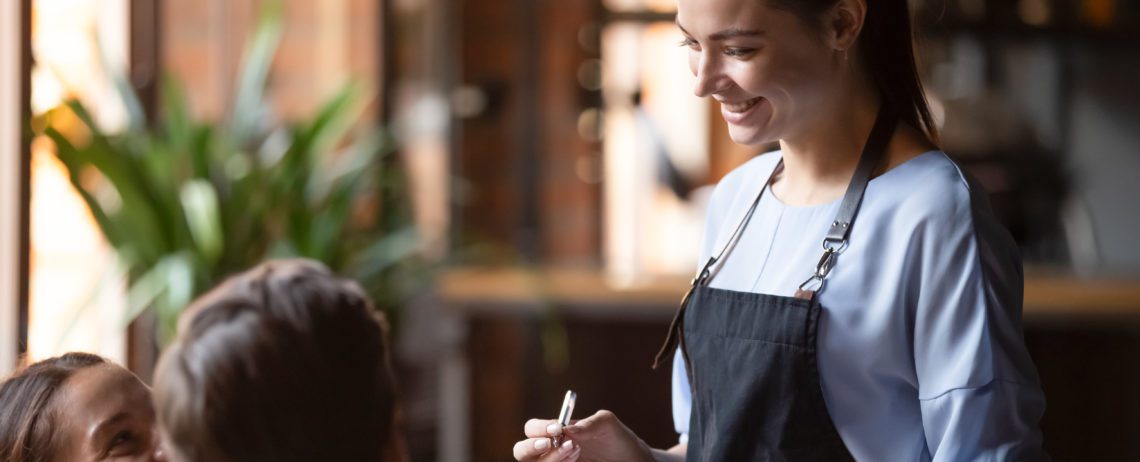Helping the hospitality industry avoid closures during COVID-19
Industry Trends | By | 23 Sep 2020 | 3 minute read

Hospitality has been hit the hardest in the wake of COVID-19. With strict new hygiene measures in place, keeping eating spaces sanitized and guest areas clean is paramount to avoid sudden closures of our favorite restaurants, hotels, and bars.
We explore how hospitality operators can ride the revolving door of uncertainty that come with closing and reopening, and how to minimize the risk of closure, even if another outbreak occurs.
Hospitality struggles to recover
COVID-19 outbreaks such as the Guzman y Gomez restaurant in Sydney have meant rapid closures throughout the industry, which has left hospitality businesses apprehensive about reopening.
Even if government guidance doesn’t force a hospitality closure, other factors are at play.
Over in parts of Europe, new 14-day quarantine measures mean that hotels are having to close their doors fast due to cancellations, as customers don’t want to have to quarantine when they come back.
In the UK, the government trialed the Eat Out To Help Out scheme, by offering 50% off food and drink Monday-Wednesday to help boost the economy, as well as increase low consumer confidence.
As hospitality is the most publicly trafficked sector, customers are naturally more reticent to engage with the industry, especially as carriers of the virus may be asymptomatic.
A recent survey by Safety Culture showed that more than half of respondents (54%) would feel “very uncomfortable” or “uncomfortable” staying at a hotel over the next 3 months.
So how can we encourage customer trust in our hotels, pubs, and bars, particularly if a second wave of COVID-19 approaches?
How to manage the uncertainty of closures
Closures can come at a moment’s notice and be devastating for your revenue and bottom line. Here’s how to manage these uncertainties on a daily basis:
Monitor real-time data through dashboards
iAuditor’s real-time display can show you exactly what tasks have been completed and highlight any areas of risk, so you can quickly attend to any areas of doubt.
Encourage staff to stay at home if they display any symptoms
A high turnover of staff is common in the hospitality industry. Using shift workers and more staff means more opportunity for risk, so closely monitor the well being of your staff.
Track and trace all visitor data, conducting temperature checks at the building if possible
With possibly hundreds of guests on your premises over the course of just a week, an outbreak can spread quickly. Be stringent about capturing details and monitoring symptoms at the door.
Ask staff to keep the app in their pocket to be alerted to a high risk situation/should an outbreak occur
In a pandemic, response times are crucial. Being able to communicate to all staff in real-time protects the health of everyone in your business.
Stay alert via daily briefings, updates on news, and government guidance
You could set up daily SMS alert briefings to let staff know the current COVID-19 numbers in your area, so that appropriate action can be taken if the cases start to increase.
Minimizing the risk of closures
At a more granular level, the two main risks in your building itself are spreading the virus through poor sanitation or close contact with someone contagious.
Here’s how you can help mitigate both of these risks and avoid a rapid shutdown:
Keeping trafficked spaces sanitized
- Bars and restaurants have a high risk of contagion. Upload digital hygiene checklists for sanitizing tables, cutlery, cups, and other shared items.
- Make sure lifts, doorhandles, telephones, and other trafficked surfaces are regularly cleaned and checked off by a responsible team member when complete.
- Install cleaning stations throughout trafficked areas.
Managing risk in high footfall spaces
- Bars and restaurants become the highest risk when alcohol is involved. Ensure that customers can still socially distance when consuming alcohol.
- Hotels can introduce social distancing by offering clear, directional signage and staggered times for socialising and dining areas (i.e. breakfast).
- Consider reducing capacity for more space – could your bar or restaurant still operate at 30% or 40% capacity?
Using iAuditor to keep your premises sparkling clean
Snooze Eatery in the US used iAuditor when it seemed like COVID-19 may threaten their entire business. They decided to create a new role within the company, called a ‘Safety Dancer’.
‘Safety Dancers’ clean all the time, moving around all day. In iAuditor, they work off two main cleaning checklists: One is a 15 minute cycle, and the other is an hourly cycle. Safety Dancers are in charge of cleaning, sanitizing, and managing the capacity of the premises.
For guests at Snooze Eatery, they could trust the restaurant’s safety and cleanliness standards and enjoy a cup of coffee or breakfast in bliss without feeling concerned.
To provide the same sense of safety for your customers, check out our range of free checklists for the hospitality sector below:
Hospitality checklists
- Restaurant closure checklist
- Cafe and Restaurant Reopening
- Hospitality – Bar Re-Opening Checklist
- 6 of the Best Restaurant Cleaning Checklists
- Cleaning Schedule Templates
Other COVID-19 checklists:
Important Notice
The information contained in this article is general in nature and you should consider whether the information is appropriate to your specific needs. Legal and other matters referred to in this article are based on our interpretation of laws existing at the time and should not be relied on in place of professional advice. We are not responsible for the content of any site owned by a third party that may be linked to this article. SafetyCulture disclaims all liability (except for any liability which by law cannot be excluded) for any error, inaccuracy, or omission from the information contained in this article, any site linked to this article, and any loss or damage suffered by any person directly or indirectly through relying on this information.





